Estimated reading time: 8 minutes
When CZ announced it was going to purchase Colt it seemed like sacrilege. Colt is synonymous with American handguns and rifles. It would be as if a European company took over Anheuser-Busch, right? Scratch that. Colt’s new owners certainly know how to produce firearms. The additions to the Python line have reversed the dearth of Colt double-action revolvers that have lasted decades. Since 2020, when Colt announced the return of the new and improved Python, new variants have steadily come out of the Hartford, Connecticut, factory.
Table of contents
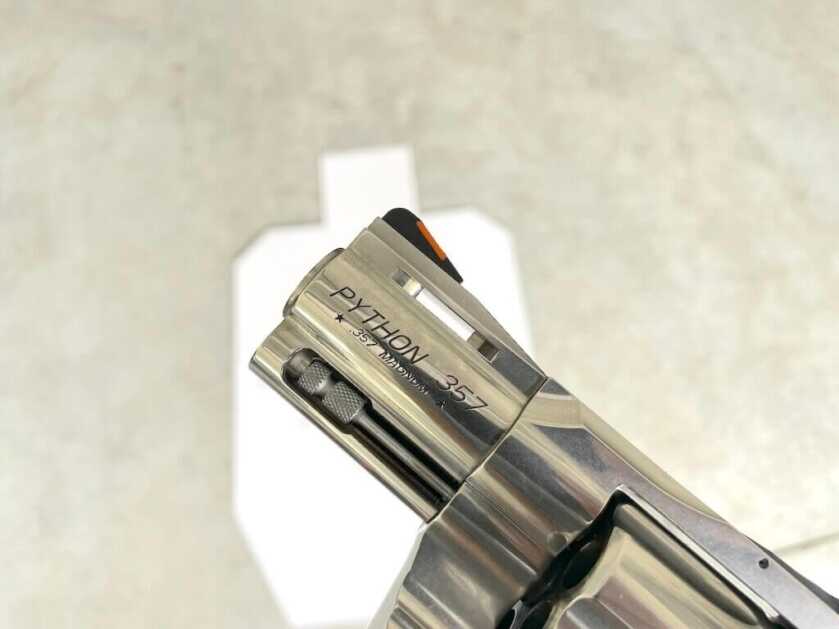
One of the latest models is the Python Classic with a 2.5-inch barrel. This revolver looks every bit iconic and retro as you would expect from a mid-1950s design, and that might just be a polite way of saying the Colt Python Classic is old. The fact is that Python is an old design, as are the 1911, Hi-Power, and AR-15. They are continually being stretched between retro designs and revitalized formats for today’s shooters. So has the new Classic Python.
New Colt Pythons
New Colt Pythons circa 2020 still feature the distinct aesthetics of the original iconic snake, like the vent-rib under lug barrel, but newer guns have an updated mechanism, different sights, and a beefier frame. If you have never fired an early version of a Python—make a note on your shooting bucket list—expect a revolver with a smooth trigger and an accurate revolver. The new Pythons have the same smooth trigger pull and accuracy.
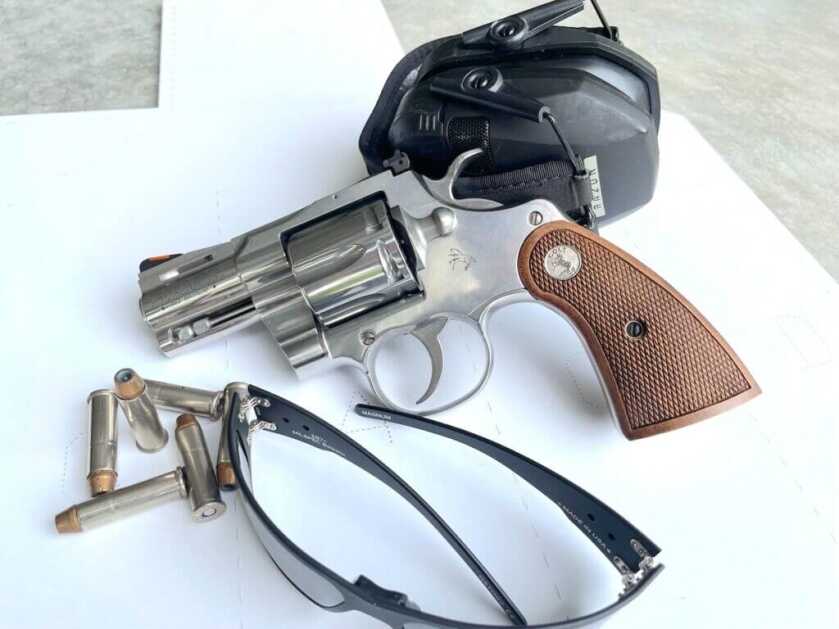
The mechanism in the new Pythons is similar to the originals but different with noticeably fewer parts. The mainspring is not a coil spring like in most Smith & Wesson guns and all Taurus and Ruger revolvers. It is a flat U-shaped spring. New Pythons also use a Smith & Wesson-style cylinder stop. This new cylinder stop is located above and forward of the trigger.
Some Changes
Original Pythons had a reputation for tight cylinder lock-up with no play. The new Python Classic is the same. There is hardly a wiggle in the cylinder when it is locked in the frame. The barrel-to-cylinder gap measured .004 inches, which is at the tight end of the spec and a good thing since there is less play and wiggle in the cylinder.
About 30 percent more steel was added to the top strap so a steady diet of high-power 357 Magnum ammunition could be used. The hammer and trigger are machined from billet steel, unlike other revolvers that use the MIM process, meaning the parts are injection molded from powdered metal. The mechanism is polished, giving the Python Classic a smooth trigger. It measured an honest 10 pounds, but felt less. In single-action the trigger was 5.9 pounds, which in my opinion is way too heavy. I’d prefer closer to 4 pounds or slightly less.
Available on GunsAmerica Now

New Pythons have a transfer bar safety system built-in with the firing pin housed in the frame. You can dry fire the Python without damaging the revolver. Both the hammer and trigger are serrated.

The front sight is replaceable via a hex screw. The Python Classic is equipped with a red insert ramp style sight circa the 1970s. The rear sight is matte black and adjustable for windage and elevation. I wish Colt serrated the shooter-facing side to help cut sun glare.
Colt Python 1:14 Twist Rate
The 2.5-inch barrel sports the classic under lug and vent rib. The under lug makes the revolver heavier, which helps manage recoil. Colt kept the original and faster 1:14” LH rifling twist rate, which stabilizes most bullets better than the 1:18.75” twist used in S&W revolvers. Ruger uses different twist rates in Ruger’s .357 Magnum revolvers is 1:16” RH twist for LCR, LCRx, SP101, Blackhawk, and Vaquero; the GP100 and Redhawk use a 1:18.75” RH twist. Taurus revolvers use a 1:16.5” RH twist rate.
The full-size ejector rod is housed in a cutout in the bottom lug. The end of the ejector rod is knurled for better grip. The muzzle is crowned.

The bright stainless finish on the Classic Python is brilliant in both looks and maintenance. It makes cleaning the snake easier. The Classic Python retains the iconic “prancing pony” roll mark on the left side of the frame and a modern QR code on the right side.
Retro Cool Python: Just The Facts, Ma’am
The checkered wood grips look straight out of a 1950s detective TV show and are certainly as cool as Steve McQueen in Bullit. Yes, I know he used a Colt Diamondback, but you get the idea. They are thin and inset with a nickel Colt medallion and feel good in hand except for that space behind the trigger guard and the front of the grip strap. I anticipated my knuckles getting slammed when using 357 Magnum ammo. Back in the day, a Tyler T-Grip was used to fill that space and make the grip larger without adding bulk.
I ran the Classic Python with both 357 Magnum and 38 Special with a mix of bullet weights and types. For 357 Magnum ammo, I used Federal Hydra-Shok with a 158-grain JHP and Winchester Defender with a 125-grain BJHP. Muzzle velocity and energy measured 1200 fps/505 ft-lb. and 1128 fps/354 ft-lb, respectively. I also used Magtech 38 Special with a 158 LRN through the 2.5-incher which had 771 fps velocity and 209 ft-lb at the muzzle.
Running the Colt Python Classic
For accuracy, I tested at 25 yards, which is far for a snub nose revolver, using a rest and fired the Classic Python 2.5” in single action. My best 5-shot group was with the 158-grain Federal 357 Magnum ammo: 1.92 inches. The best group with the Winchester 125-grain 357 Magnum was 2.26 inches. The 38 Special Magtech with the 158-grain bullet was 2.67 inches. Across all ammo I averaged about 2.5 inches. The compact Python Classic has very good accuracy. The SA trigger pull was a bit heavier than I prefer, but still had good accuracy.
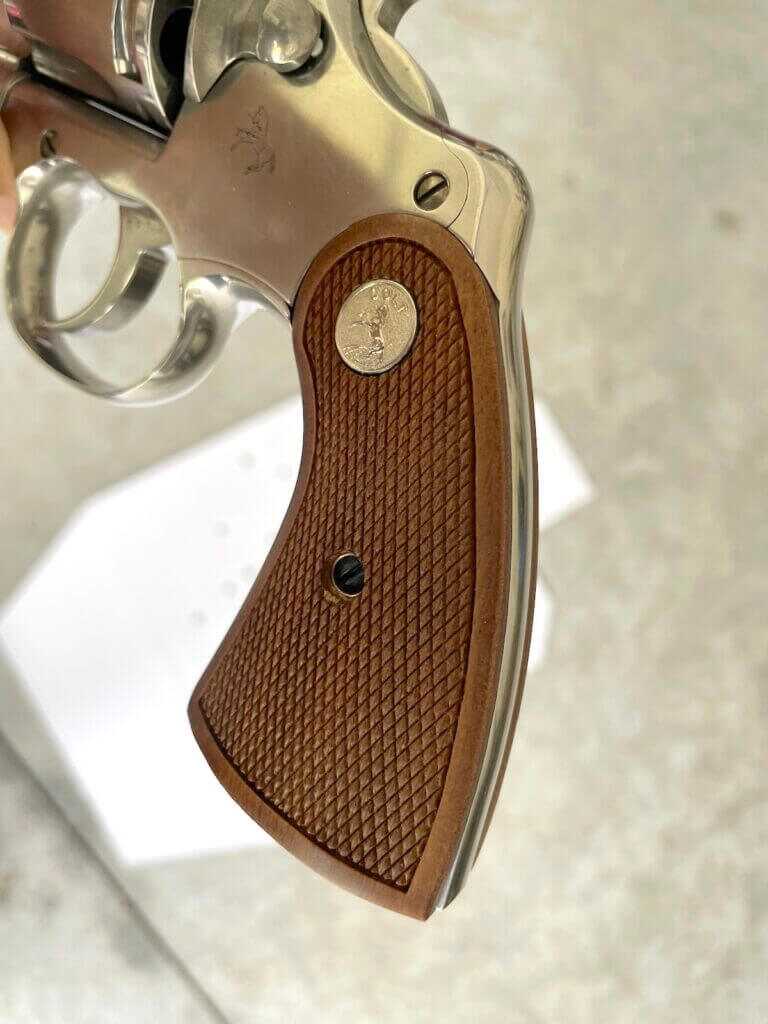
My Thoughts Shooting It
With an IDPA target set at 10 yards, I ran the Python for speed firing in double action. I fired a Bill Drill with the Classic as fast as I could while still staying in the center of mass. The smooth trigger allowed me to concentrate on the front sight and better control shots. The weight of the Python Classic helps. With the 38 Special cartridges, I was much faster than with 357 Magnum rounds. Shooting the 38 Special through the Classic is fun and has nearly no recoil.
READ MORE: Springfield Armory Echelon 4.5F Comp
I gripped high on the Classic, so much so that the hammer spur nearly touched the web of my hand when shooting double action. Basically, a high hold means less muzzle flip. That’s why revolver shooters bob the hammer spur, for a higher hold with no hammer bite. I staged the trigger—squeezing it so the cylinder rotates. The chamber aligns with the bore. Then I followed through with the trigger pull to fire the shot. This technique is good to use when a more precise shot needs to be taken, like on an A-Zone head shot which measures 3.9″ x 1.9”.
The Python Classic offers really good performance and can easily be used as an EDC. As for mine, I’m adding a BK Grips adapter and wearing it to my next BBQ.
*** Buy and Sell on GunsAmerica! ***




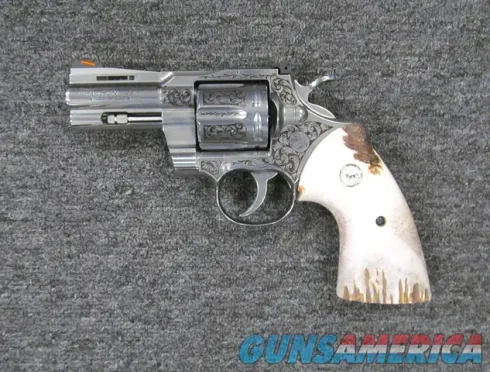





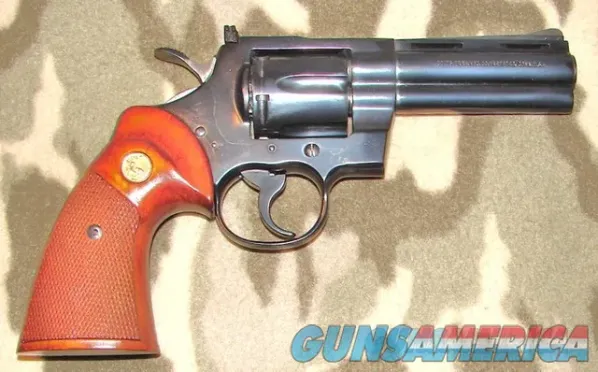

Noooooooo……all the gun whore writer ” experts” told’t me that revolvers are dead. There must be some mistake.